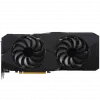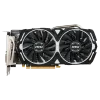
ATI Technologies Inc. (ATI) was a major designer and supplier of graphics processing units and motherboard chipsets. In 2006, the company was acquired by Advanced Micro Devices (AMD) and was renamed the AMD Graphics Product Group or ATI Technologies ULC, although the ATI brand was retained for graphics cards.
The AMD Graphics Product Group is a fabless semiconductor company conducting in-house research and development and outsourcing the manufacturing and assembly of its products. Its main competitor is NVIDIA in the graphics and handheld market. The flagship product, the Radeon series of graphics cards, directly competes with NVIDIA's GeForce. These two companies' dominance of the market forced other manufacturers into niche roles.


